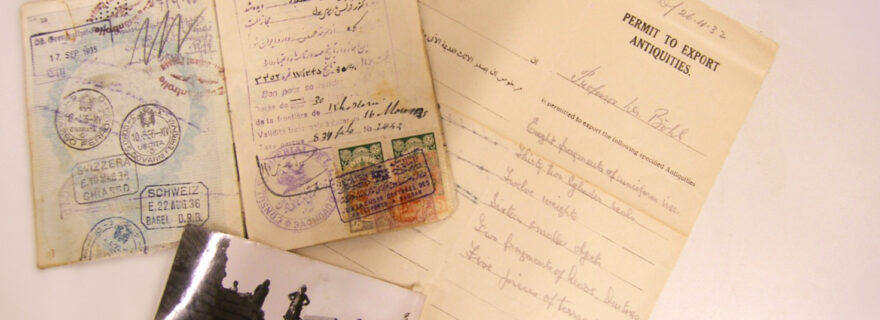Travelling to ancient Mesopotamia with professor Böhl
The archive of professor Frans de Liagre Böhl (1882-1976) contains a wealth of knowledge and documentation about early 20th-century Middle Eastern archaeology. The archive, owned by the Netherands Institute for the Near East will soon be available for research via the Leiden Special Collections.
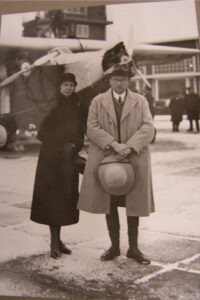

The engine of a small KLM Fokker aeroplane huffs and puffs. Before take-off, passenger Professor Frans de Liagre Böhl gets his picture taken in front of the aeroplane. This photograph belongs to the De Liagre Böhl archive owned by the Netherlands Institute for the Near East (NINO), which will soon become part of the Special Collections of the UBL. Böhl, who was appointed professor of Assyriology in Leiden in 1927, was one of NINO’s first directors. He was an active man, who was much engaged with academic activities all over Europe. He also gave lectures on Egypt and Mesopotamia to general audiences and organized public travels to destinations around the Mediterranean. The photograph here was taken in 1932 at Schiphol, when he was about to undertake a study trip to visit archaeological sites in Iran and Iraq. We are well-informed about this journey, and his other travels, as he recorded his adventures in his travel journals.

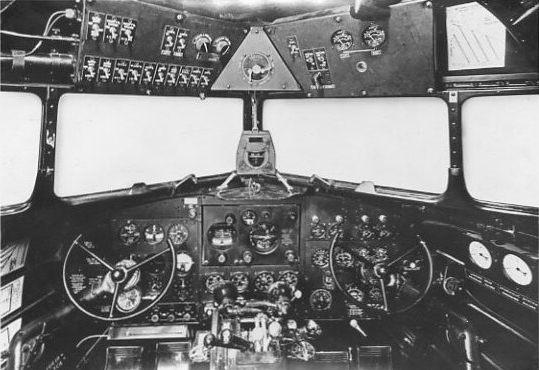
Böhl embarked to Iraq again in January 1939. In his travel notes, Böhl records a peculiar incident when flying miles above the earth. The pilot had sent him a message: ‘if he would like to sit in the cockpit’. Naturally, Böhl accepted. As bad weather conditions made a landing in Bagdad impossible, the KLM aeroplane flew to the next possible stop, the city of Basra. By a stroke of luck, it allowed Böhl to look down at the Mesopotamian plains, and to see some of the excavation sites that he would soon visit. What he saw, was also recorded by the KLM camera on the plane: the results are truly unique bird’s eye images of the Mesopotamian landscape, early examples of aerial photography.

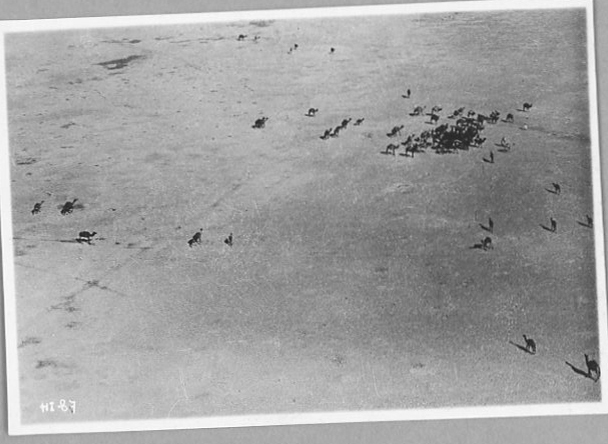
Once safely landed in Iraq, Böhl visited some archaeological sites in the region around Bagdad in the company of international colleagues. Among the most famous excavations was ancient Uruk or Warka. This city, located near present-day Al-Warqa in the south of Iraq, is the place where the oldest cuneiform tablets were discovered. It was also the hometown of the legendary king Gilgamesh, the main protagonist of the Epic of Gilgamesh, the most famous composition from the ancient Near East. Böhl’s pictures offer a unique insight into excavation practices and social dynamics of a period long gone. One specific find recorded by Böhl may be highlighted. At Uruk, Böhl was witness to the excavation of a very precious ancient object: a life-size limestone head of a goddess or priestess, probably dating to around 3200 BCE. Böhl photographed this spectacular discovery in situ, as you can see on the slide below. Truly, as Böhl reports, it was an ‘unforgettable day’.
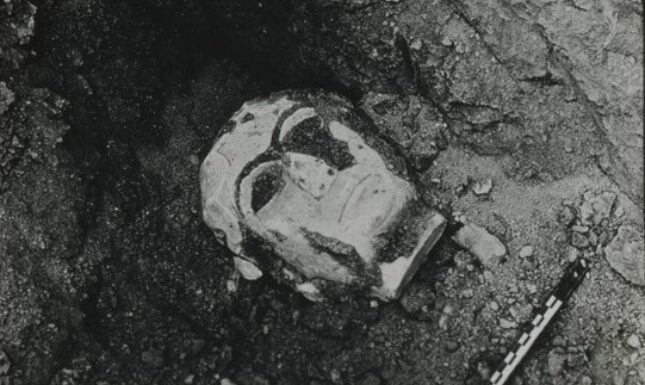

Whilst travelling through Iraq, Böhl purchased various special antiquities from Iraqi antiquities dealers. Böhl was able to buy cuneiform tablets as well as other antiquities, both for his own collection, and the collection of the National Museum of Antiquities in Leiden. He did so just before the Iraqi government would prohibit the export of antiquities. His journey home took a week, and so his five-month-long Mesopotamia trip came to an end. We are lucky to have his travel diaries and his photographs today. They open a window into many aspects of daily life during an important and defining period of the region.
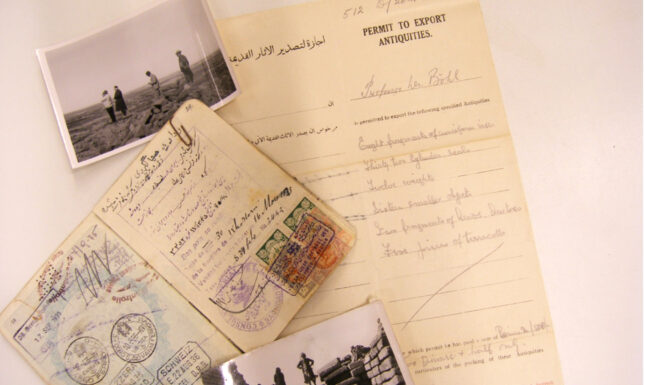

There is much more to Böhl’s archive than these travel notes and pictures. Böhl’s records also include elaborate correspondence both within his academic circles and with a broader public. Of special interest is his letter exchange with former German emperor Wilhelm II. The archive also contains Böhl’s lecture notes, including the glass slides that accompanied them. Altogether, it offers a fascinating insight into academic life in the first half of the 20th century, and the birth and development of the field of ancient Near Eastern Studies in the Netherlands.
_______________________
Koen Klein and Wouter Hofland are research assistants at the Netherlands Institute for Near East Studies.

